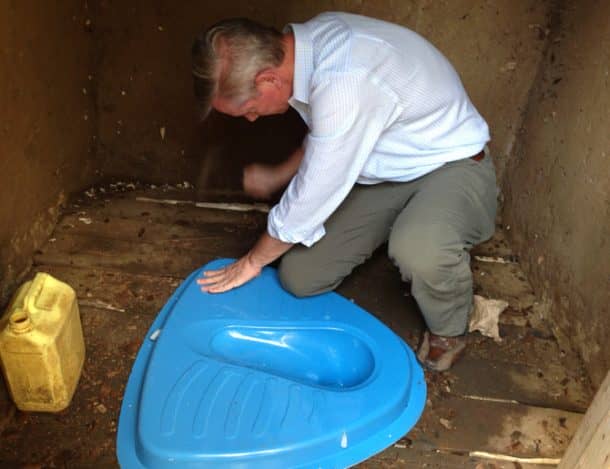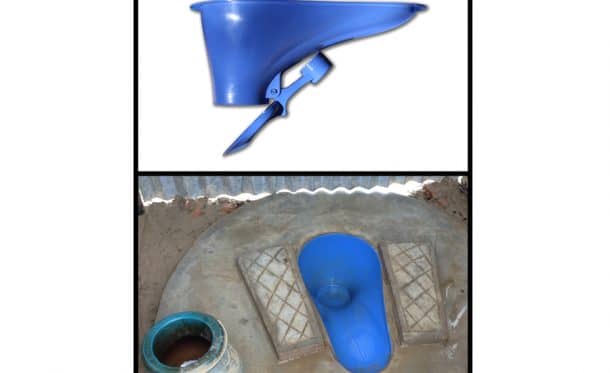Providing proper sanitation to the people is one of the most pressing global issues. According to an estimate, over 1.7 million deaths occur due to poor sanitary conditions, and around one-third of them are children under the age of five. Over 2.4 billion people in the world don’t have an adequate toilet, mostly the poorest lot, which is a shocking and disturbing figure.
To alleviate the crisis, American Standards have designed the SaTo Pan which is a simple, low cost, and simple to install hygienic toilet pan made out of plastic and costing as little as $1.50!

When you use the toilet, the weight causes the simple yet ingenious trapdoor mechanism to open, dropping the waste below. The mechanism has a counterweight which flips the door back shut. This means you don’t have to waste volumes of water to flush the toilet and the mechanical and water seals around the door and the toilet means the excrement is hidden away from the open air, preventing disease transmission via flying insects.
The toilet has been given huge grants by the Bill & Melinda Gates Foundation, as part of their Water, Sanitation & Hygiene program that aims at developing initiatives and technologies to fix the sanitation problems in the third world countries.
Over a million SaTo Pan toilets have been distributed to 14 different countries, and at least 800,000 have been installed in countries like Bangladesh, Uganda, Haiti, Malawi, Nepal, Nigeria, and the Philippines.

Along with installation, the project focuses on education and public awareness along with urging the governments to address the bigger picture. The training and campaigns include information on clean drinking water and go as big as the development of water dams and filtration plants.
The documentary below reveals the story of LIXIL, the company that manufactures SaTo.



It’s a nice start, but the important thing is what happens to the waste AFTER it goes down through the toilet pan. If it goes into a poorly constructed waste container, and then leaks into the drinking water supply, then the toilet pan has done nothing. Outhouses have worked fine for hundreds of years without needing anything like this. They just have to be located in the right place and some thought given to drainage and keeping it down stream from the fresh water supply to prevent contamination.